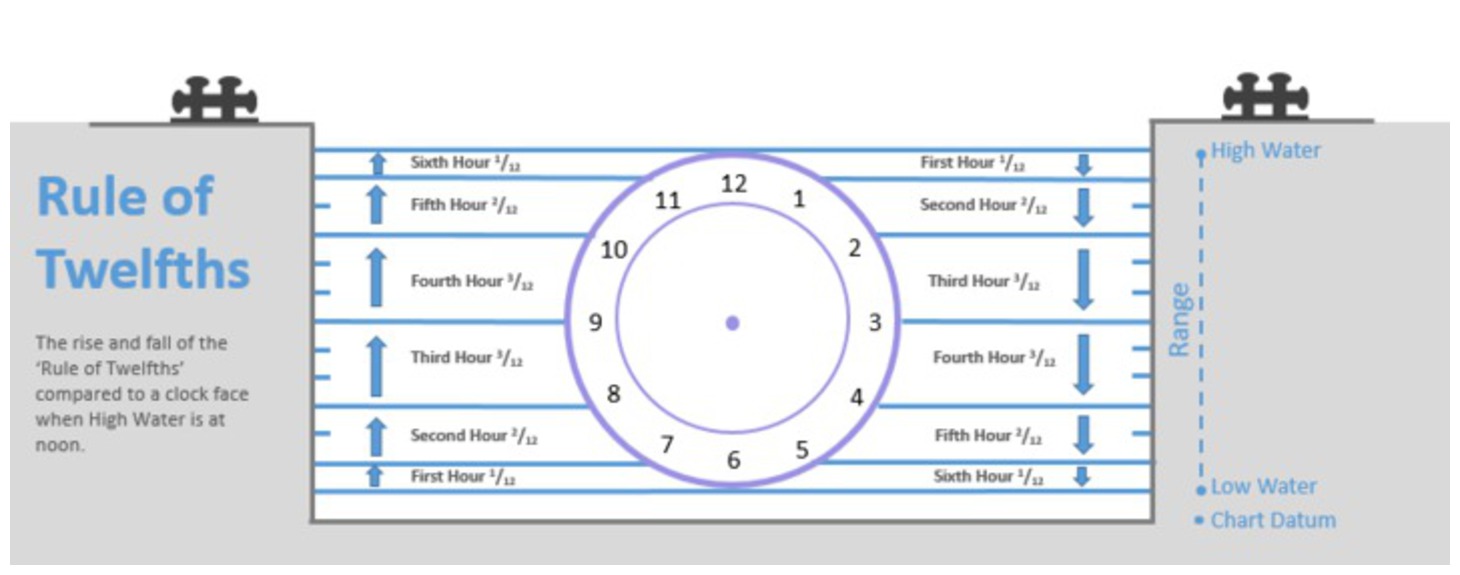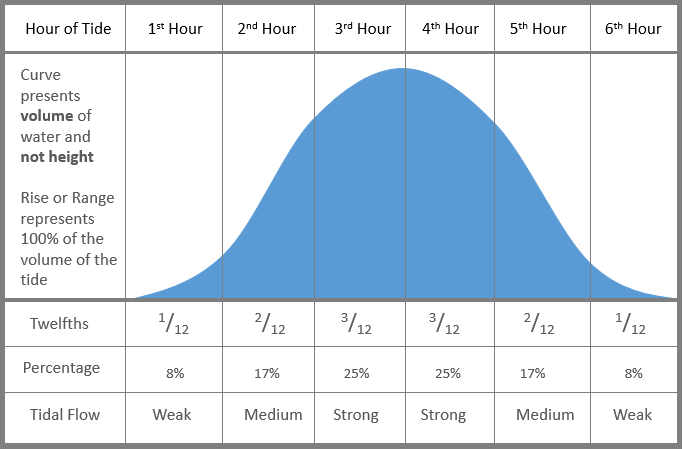
What is the issue?
Applying a graphical procedure, found by reference to an appropriate almanac and the times and heights of high and low water, a navigator may precisely work out intermediate tidal heights and times. This then enables depth restricted vessels to pass into shallow waters supported by tidal water and accurately plot a position where a vessel may anchor and stay afloat.However plotting tides to this level of detail is a skilled, onerous and time consuming task. It is for many cruisers more for the world of merchant sailors. Moreover, tidal curves are often only available for major ports where most leisure vessels would have ample water, not in out of the way anchorages. In the real world, even if the information is available, few sailors would go to this level of detail.
Why address this?
Having a feel for tidal depth and flow is key to successful coastal cruising. Knowing the current state of the tide and planning around it will help a vessel anchor as close as conveniently possible to the shore and avoid being left high and dry or at least executing the 'lean of shame’. A good understanding will also enable a vessel to accurately deduce when the additional height of the tide is available to safely approach a depth restricted anchorage, a harbour, or to pass over a sand bar. It is also important when launching and retrieving boats on slipways or on a tidal shore.How to address this?
A simplified ‘Rule of Twelfths’ method can be used to calculate intermediate times and heights between High and Low Water without having to refer to tidal curves or graphs. It’s reasonably easy method can produce results that prove acceptable for the purposes of most sailors.
All that is required for the ‘Rule of Twelfths’ is to know the time and height of either high or low water together and the range for that tide - the difference between the tidal height of high and low water. This may often be all that is available in the pocket-sized tables issued by marinas or yacht clubs.
Most tides are semi-diurnal, meaning there are two high and two low tides a day 12:25 minutes apart. The ‘Rule of Twelfths’ is based on the assumption that the tide does not rise or fall at a constant rate throughout its duration. It also assumes the curve for the area is symmetrical. The rule states that in the first hour after low tide the water level will rise by one-twelfth of the range, in the second-hour two-twelfths, and so on according to the sequence as illustrated above. A rough percentage may also be deduced along the same lines. The two important points to note are that in the third and fourth hour there is a lot of tidal movement, and in the first and sixth hour, there is very little.


The ‘Rule of Twelfths’ does require some mental arithmetic and it is worthwhile stepping through a simple example of how the rule is applied. If a tide table states that tomorrow's low water is noon and that the water level at this time would be 2.00 metres above chart datum and further, that at the following high tide the water level would be 14.00 metres. We could work out the height of water at 3:00 p.m. as follows:
- (i) The total increase, rise or range in water level between low and high tide is 14 - 2 = 12 metres.
- (ii) In the first hour, the water level would rise by 1 twelfth of the total (12 metres) or: 1 metre.
- In the second hour, the water level would rise by 2 twelfths of the total (12 metres) or: 2 metres.
- (iv) In the third hour, the water level would rise by 3 twelfths of the total (12 metres) or: 3 metres.
The rule thus indicates the increase in the water level by 3:00 p.m. will be 6 metres. This however only represents the increase or rise. The total depth of the water, relative to chart datum, will include the 2 metres depth at low tide: 6 m + 2 m = 8 metres.

Generally the 'Rule of Twelfths' is an excellent everyday tidal indicator but it has limitations. These stem from the fact that it assumes that the rate of tidal flow increases smoothly to a maximum halfway, between high and low tide, before smoothly decreasing to zero again and that the interval between low and high tides is approximately six hours. This symmetrical six-hour rise and fall of the tide is not always the case.
Some geographical locations do not have such a uniform curve. Very good examples of this can be found in the south Coast of England. The Solent, or Poole Harbour, have 'double' high waters and Weymouth Bay has 'double' low waters. In these instances, the ‘Rule of Twelfths’ cannot be used even for an estimate and the officially produced tide tables or an almanacks become critical.
With thanks to:
Michael Harpur, Yacht Obsession.Add your review or comment:
Please log in to leave a review of this tip.
eOceanic makes no guarantee of the validity of this information, you must read our legal page. However, we ask you to help us increase accuracy. If you spot an inaccuracy or an omission on this page please contact us and we will be delighted to rectify it. Don't forget to help us by sharing your own experience.

